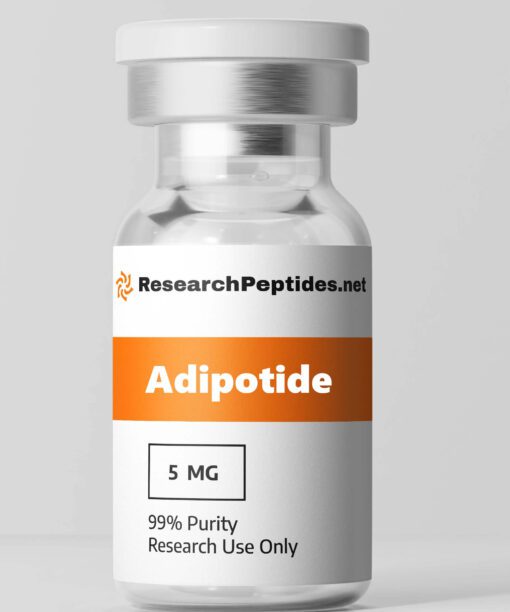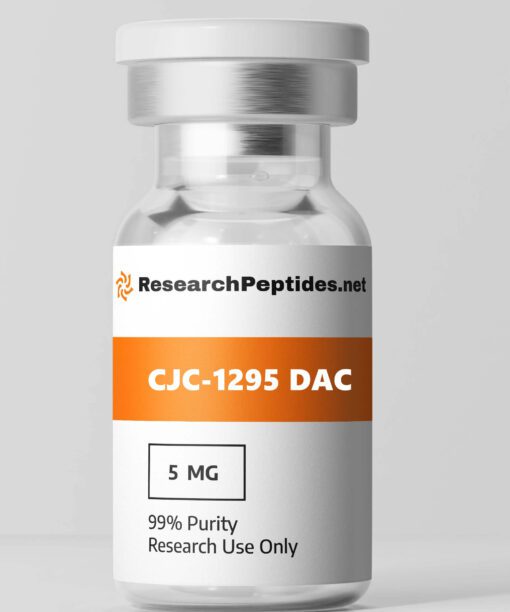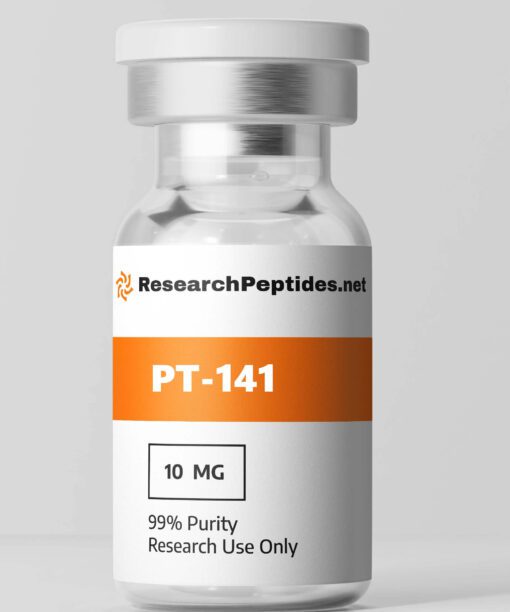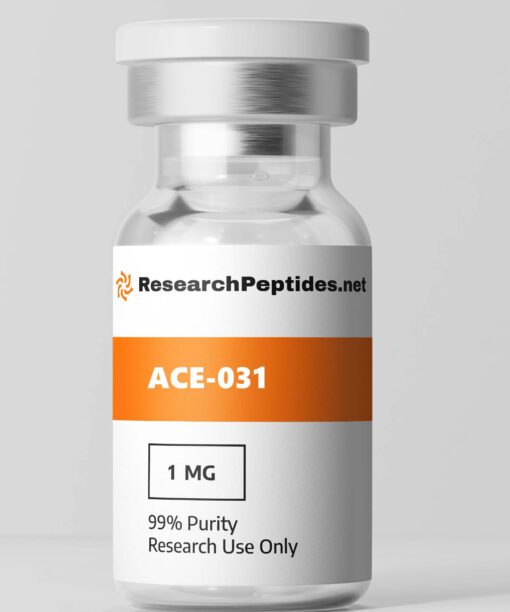Unlocking the Potential of Melanotan 1 (MT1): Groundbreaking Research Sheds Light on its Promising Applications
Introducing Melanotan 1 (MT1): Unveiling the Science of Safe Tanning
Melanotan 1 (MT1), a synthetic peptide analog of the naturally occurring hormone α-MSH (alpha-melanocyte-stimulating hormone), has been at the forefront of scientific research due to its potential applications in various fields. This peptide, developed initially with the aim of providing a means of sunless tanning, has since been found to have far-reaching implications beyond its initial purpose.
The primary function of MT1 lies in its ability to stimulate the production of melanin, a pigment responsible for the color of our skin, hair, and eyes. This process, known as melanogenesis, is a natural defense mechanism of the body against harmful UV radiation. By mimicking the action of α-MSH, MT1 induces a tanning response without the need for excessive sun exposure, thereby reducing the risk of skin damage and associated health issues.
However, the potential of MT1 extends beyond skin pigmentation. Recent studies have begun to uncover a range of promising applications for this peptide in areas such as immunomodulation, anti-inflammatory responses, and even neuroprotection.
In the realm of immunomodulation, MT1 has shown the potential in enhancing the body’s immune response. This could have significant implications for the treatment of various immune-related conditions, potentially offering a new avenue for therapeutic intervention.
In terms of its anti-inflammatory properties, research has indicated that MT1 may play a role in reducing inflammation and associated pain. This could be particularly beneficial in the management of chronic inflammatory conditions, offering a novel approach to pain relief and symptom management.
Perhaps one of the most exciting areas of MT1 research lies in its potential neuroprotective effects. Preliminary studies have suggested that MT1 may have the ability to protect neurons from damage, which could have profound implications for the treatment of neurodegenerative disorders such as Alzheimer’s and Parkinson’s disease.
1. What is Melanotan 1 (MT1)?
Melanotan 1 (MT1) is a synthetic peptide that was initially developed as a potential treatment for skin conditions such as erythropoietic protoporphyria and vitiligo. It belongs to a class of peptides known as melanocortins, which regulate various physiological functions in the body.
MT1 works by stimulating the production of melanin, the pigment responsible for skin, hair, and eye color. This peptide binds to specific receptors in the skin called melanocortin receptors, activating them and triggering a series of cellular events that lead to increased melanin synthesis.
The development of MT1 has been driven by the desire to find safe and effective ways to enhance tanning and protect against harmful UV radiation. While it is not currently approved for use in humans, MT1 has been extensively studied in non-human research models to explore its potential benefits and applications.
2. How Does Melanotan 1 (MT1) Work?
The mechanism of action of Melanotan 1 (MT1) involves its interaction with melanocortin receptors in the skin. When administered, MT1 binds to these receptors and activates them, leading to increased production of melanin.
Melanin synthesis is regulated by a complex signaling pathway involving several enzymes and proteins. Upon activation of melanocortin receptors by MT1, cyclic adenosine monophosphate (cAMP) levels increase within melanocytes – specialized cells responsible for producing melanin.
This rise in cAMP triggers a cascade of intracellular events that ultimately result in the upregulation of key enzymes involved in melanogenesis, such as tyrosinase. These enzymes promote the conversion of tyrosine, an amino acid, into melanin pigments. As a result, the skin darkens, providing protection against UV radiation and creating a tanned appearance.
3. Melanotan 1 (MT1) Benefits
Melanotan 1 (MT1) has shown several potential benefits in non-human research studies:
- Skin pigmentation: MT1 has been found to significantly increase skin pigmentation in various animal models. This effect can be beneficial for individuals with conditions that cause depigmentation, such as vitiligo.
- Tanning: MT1 is known for its ability to induce a natural-looking tan without the need for excessive sun exposure. This can be particularly advantageous for individuals who are prone to sunburn or those seeking a bronzed complexion.
- UV protection: By stimulating melanin production, MT1 may offer some level of protection against harmful UV radiation. Melanin acts as a natural sunscreen by absorbing and dispersing UV rays, reducing their damaging effects on the skin.
4. Melanotan 1 (MT1) Side Effects
In non-human studies, Melanotan 1 (MT1) has been generally well-tolerated with minimal side effects. However, it is important to note that these findings may not directly translate to humans due to species differences and variations in individual responses.
Possible side effects observed in animal models include:
- Nausea: Some animals treated with MT1 have exhibited mild gastrointestinal discomfort and transient nausea.
- Increased libido: In certain cases, MT1 administration has been associated with an increase in sexual desire and arousal in animals.
- Darkened moles: There have been reports of darkening or enlargement of existing moles in animals receiving MT1. Regular monitoring of skin lesions is recommended.
It is essential to conduct further research to fully understand the potential side effects and long-term safety profile of MT1 before considering its use in humans.
5. Advantages of Melanotan 1 (MT1)
Melanotan 1 (MT1) offers several advantages compared to other melanocortin peptides:
- Prolonged duration of action: MT1 has a longer half-life compared to other melanocortin peptides, allowing for less frequent dosing.
- Gentle gradual tanning: MT1 promotes a gradual tan that appears natural and even, without the need for excessive sun exposure or artificial tanning methods.
- Potential UV protection: The increased melanin production induced by MT1 may provide some level of protection against harmful UV radiation, reducing the risk of sunburn and other UV-related skin damage.
The unique features and benefits offered by MT1 make it an intriguing candidate for further research into its potential applications in various fields, including dermatology and photoprotection.
6. Melanotan 1 (MT1) Research Topics
Melanotan 1 (MT1) has been studied in various research areas, including:
- Skin cancer prevention: Researchers have explored whether the increased pigmentation induced by MT1 can offer protection against skin cancer by reducing the harmful effects of UV radiation.
- UV protection: The potential photoprotective effects of MT1 have been investigated, aiming to understand its ability to shield the skin from damage caused by UV exposure.
- Vitiligo treatment: MT1 has shown promise as a potential treatment for vitiligo, a condition characterized by depigmented patches on the skin. Studies have evaluated its efficacy in restoring pigmentation in affected individuals.
Further research is needed to fully elucidate the mechanisms of action and therapeutic potential of MT1 in these and other areas.
7. Future Research Directions for Melanotan 1 (MT1)
The future research directions for Melanotan 1 (MT1) could include:
- Clinical trials in humans: Conducting controlled clinical trials to evaluate the safety and efficacy of MT1 in humans, particularly in conditions such as vitiligo or as a preventive measure against skin cancer.
- Mechanism of action studies: Further investigating the molecular mechanisms underlying the effects of MT1 on melanin production and exploring potential interactions with other signaling pathways.
- Optimizing dosing regimens: Refining dosing protocols to maximize the benefits of MT1 while minimizing potential side effects or long-term risks.
By addressing these research gaps, scientists can gain a deeper understanding of MT1’s therapeutic potential and pave the way for its future applications in clinical practice.
8. Melanotan 1 (MTI) Before and After in Research
In non-human research studies using Melanotan 1 (MT1), before-and-after observations have demonstrated significant changes in skin pigmentation and tanning.
For example, in animal models with depigmented skin, administration of MT1 has led to a visible darkening of the affected areas. The before-and-after images show an increase in melanin production, resulting in a more uniform and pigmented appearance.
Similarly, when animals are treated with MT1 to induce tanning, the before-and-after photos reveal a noticeable change in skin color. The tan appears natural and even, mimicking the effects of sun exposure but without the associated risks.
9. Melanotan 1 (MTI) Cycle for Research
The recommended cycle duration for using Melanotan 1 (MT1) in research can vary depending on the specific goals and protocols being followed. However, a typical cycle may last anywhere from 4 to 6 weeks.
When determining the optimal dosing frequency and duration, it is important to consider factors such as individual response, desired level of pigmentation or tanning, and any potential side effects that may arise.
A common approach is to start with a lower dose of MT1 and gradually increase it over the course of several weeks until the desired results are achieved. This allows for careful monitoring of any adverse reactions and adjustment of dosing if necessary.
10. Best Melanotan 1 (MTI) Results in Research
In non-human studies using Melanotan 1 (MT1), several notable findings have been reported:
- Promotion of uniform pigmentation: MT1 has been shown to induce a more evenly distributed pigmentation across depigmented areas, resulting in a more natural appearance.
- Long-lasting tanning effects: The tan achieved with MT1 administration can persist for an extended period, even after discontinuing treatment, due to the increased melanin content in the skin.
- Potential photoprotective effects: The elevated melanin levels induced by MT1 may provide some degree of protection against UV radiation, reducing the risk of sunburn and related skin damage.
These findings highlight the potential therapeutic value of MT1 in various applications related to pigmentation disorders, tanning, and UV protection. However, further research is needed to confirm these results and establish their clinical significance.
11. Where to Buy Melanotan 1 (MT1)?
Melanotan 1 (MT1) can be purchased from reputable peptide suppliers such as ResearchPeptides. It is important to ensure that you are obtaining MT1 from a trusted source to guarantee its quality and purity for research purposes.
When buying MT1, it is advisable to consider the following tips:
- Choose a reputable supplier: Look for a supplier with a good reputation and positive customer reviews. ResearchPeptides.net is known for providing high-quality peptides for research purposes.
- Check for product authenticity: Verify that the supplier conducts rigorous quality control measures and provides certificates of analysis for their products.
- Consider shipping and storage conditions: Ensure that the supplier offers appropriate packaging and shipping methods to maintain the integrity of the peptide during transit.
By purchasing MT1 from a reliable source like ResearchPeptides, researchers can have confidence in the quality and authenticity of their peptide for use in their studies.
12. Melanotan 1 (MT1) for Sale
Melanotan 1 (MT1) is available for purchase on the ResearchPeptides.net website, a trusted supplier of high-quality peptides for research purposes. ResearchPeptides offers MT1 in vials containing lyophilized powder, which can be reconstituted with sterile water before use.
When buying MT1 for research, it is important to adhere to ethical guidelines and regulations governing the use of peptides in scientific investigations. Researchers should ensure that they have the necessary approvals and comply with any applicable laws or regulations regarding the procurement and handling of peptides.
By obtaining MT1 from a reputable supplier like ResearchPeptides.net, researchers can have confidence in the quality and purity of their peptide, allowing them to conduct reliable and reproducible experiments.
Overall, the research on Melanotan 1 (MT1) has demonstrated promising results. Studies have shown its potential in promoting tanning, reducing sunburn risk, and potentially offering protection against skin cancer. Furthermore, MT1 has exhibited a good safety profile with minimal side effects reported. These findings suggest that MT1 could be a valuable tool for individuals seeking a safer and more efficient way to achieve a tan while minimizing sun damage.
Frequently Asked Questions About Melanotan 1 (MT1) Peptides April 2024
What are the risks of taking melanotan?
Possible Paraphrase: Some of the side effects that may occur include changes in skin tone, an increase in the number of moles and freckles, feelings of nausea, vomiting, decreased appetite, redness of the face, uncontrollable stretching and yawning, and unexpected erections. The regulatory agency in the United Kingdom, similar to the TGA, also mentioned the possibility of acne, kidney, brain, and heart issues as reported side effects.
Can melanotan permanently darken skin?
By speeding up the production of melanin, which is responsible for absorbing UV radiation and determining skin color, Melanotan can darken the skin in a similar way to a natural tan. This effect can be achieved in as little as a week through injections.
Is Melanotan 2 illegal in the US?
The purchase of Melanotan I and melanotan II is prohibited in both the United States and the United Kingdom. Despite this, they are easily accessible for sale online or at health clubs and gyms. However, Afamelanotide, an orphan drug, has been approved by the Food and Drug Administration.
Is melanotan FDA approved?
Dr. stated that Melanotan II, a man-made peptide that affects melanin production, is not regulated by the FDA and is not authorized for use in humans.
Why is Melanotan illegal?
According to dermatologists and Cancer Research UK, using the unlicensed drug is risky and should be discontinued immediately. There is evidence suggesting that these untested products may be connected to the development of skin cancer.
Is melanotan bad for kidneys?
Previous reports have documented cases of rhabdomyolysis and renal failure caused by Melanotan II. In this review, we discuss the potential kidney effects of this drug and present a specific case of renal infarction that is likely related to Melanotan II use.
Discover the Power of Peptides: Your Ultimate Resource 2024
The Peptides Store offers a wide array of peptide forms, such as protein chains, peptide mixtures, IGF-1 Proteins, Melanotan proteins, and beauty peptides. Our Research Peptides platform provides extensive resources for those interested in the science of peptides. We also offer a variety of Lab Supplies for your research needs. Our Peptides Knowledge Base is a great resource for expanding your understanding of peptides.
Author Info and References
Author Info
The information provided in this article was taken from studies carried out by recognized researchers, including Ückert, Stefan, Andreas Bannowsky, Knut Albrecht, and Markus A Kuczyk, Dorr, Robert T., Ruskin Lines, Normice Levine, Christine Brooks, Li Xiang, Victor J. Hruby, and Mac E. Hadley, Hjuler, Kasper Fjellhaugen, and Henrik Frank Lorentzen.
References
- Guo, X., Cao, J., Cai, J.-P., Wu, J., Huang, J.-g., Asthana, P., Wong, S. K. K., Ye, Z., Gurung, S., Zhang, Y., Wang, S., Wang, Z., Ge, X., Kwan, H., Lyu, A., Chan, K., Wong, N., Huang, J., Zhou, Z., Bian, Z., Yuan, S., & Wong, H. L. X. (2022). Control of SARS-CoV-2 infection by MT1-MMP-mediated shedding of ACE2. Nature Communications. https://dx.doi.org/10.1038/s41467-022-35590-x
- Pratt, J., Haidara, K., & Annabi, B. (2022). MT1-MMP Expression Levels and Catalytic Functions Dictate LDL Receptor-Related Protein-1 Ligand Internalization Capacity in U87 Glioblastoma Cells. International Journal of Molecular Sciences. https://dx.doi.org/10.3390/ijms232214214
- Maybee, D. V., Ink, N. L., & Ali, M. (2022). Novel Roles of MT1-MMP and MMP-2: Beyond the Extracellular Milieu. International Journal of Molecular Sciences. https://dx.doi.org/10.3390/ijms23179513
- Fogarasi, M., & Dima, S. (2022). The Catalytic Domain Mediates Homomultimerization of MT1-MMP and the Prodomain Interferes with MT1-MMP Oligomeric Complex Assembly. Biomolecules. https://dx.doi.org/10.3390/biom12081145
- Guo, X., Asthana, P., Gurung, S., Zhang, S., Wong, S. K. K., Fallah, S., Chow, C. F., Che, S., Zhai, L.-x., Wang, Z., Ge, X., Jiang, Z., Wu, J., Zhang, Y., Wu, X., Xu, K., Lin, C.-Y., Kwan, H., Lyu, A., Zhou, Z., Bian, Z., & Wong, H. L. X. (2022). Regulation of age-associated insulin resistance by MT1-MMP-mediated cleavage of insulin receptor. Nature Communications. https://dx.doi.org/10.1038/s41467-022-31563-2
- Zhang, J., Fang, Y., Tang, D., Xu, X.-x., Zhu, X., Wu, S., Yu, H., Cheng, H., Luo, T., Shen, Q., Gao, Y., Ma, C., Liu, Y.-J., Wei, Z., Chen, X., Tao, F., He, X., & Cao, Y. (2022). Activation of MT1/MT2 to Protect Testes and Leydig Cells against Cisplatin-Induced Oxidative Stress through the SIRT1/Nrf2 Signaling Pathway. Cells. https://dx.doi.org/10.3390/cells11101690
- Gifford, V., Woskowicz, A., Ito, N., Bálint, Š., Lagerholm, B. C., Dustin, M. L., & Itoh, Y. (2022). Coordination of two kinesin superfamily motor proteins, KIF3A and KIF13A, is essential for pericellular matrix degradation by membrane-type 1 matrix metalloproteinase (MT1-MMP) in cancer cells. Matrix Biology. https://dx.doi.org/10.1016/j.matbio.2022.01.004
- Zhai, Y.-X., Sang, W., Su, L., Shen, Y., Hu, Y., & Zhang, W. (2022). Analysis of the expression and prognostic value of MT1-MMP, β1-integrin, and YAP1 in glioma. Open Medicine. https://dx.doi.org/10.1515/med-2022-0449
- Sun, X., Gu, X., Li, K., Li, M., Peng, J., Zhang, X., Yang, L., & Xiong, J. (2022). Melatonin Promotes Antler Growth by Accelerating MT1-Mediated Mesenchymal Cell Differentiation and Inhibiting VEGF-Induced Degeneration of Chondrocytes. International Journal of Molecular Sciences. https://dx.doi.org/10.3390/ijms23020759
- Lodillinsky, C., Fuhrmann, L., Irondelle, M., Pylypenko, O., Li, X.-y., Bonsang-Kitzis, H., Reyal, F., Vacher, S., Calmel, C., De Wever, O., Bièche, I., Lacombe, M., Eiján, A., Houdusse, A., Vincent-Salomon, A., Weiss, S., Chavrier, P., & Boissan, M. (2021). Metastasis-suppressor NME1 controls the invasive switch of breast cancer by regulating MT1-MMP surface clearance. Oncogene. https://dx.doi.org/10.1038/s41388-021-01826-1
- Wang, J., Zhuo, Z.-Y., Ma, X., Liu, Y., Xu, J., He, C., Fu, Y., Wang, F., Ji, P., Zhang, L., & Liu, G. (2021). Melatonin Alleviates the Suppressive Effect of Hypoxanthine on Oocyte Nuclear Maturation and Restores Meiosis via the Melatonin Receptor 1 (MT1)-Mediated Pathway. Frontiers in Cell and Developmental Biology. https://dx.doi.org/10.3389/fcell.2021.648148
- Hiden, U., Lassance, L., Tabrizi, N., Miedl, H., Tam-Amersdorfer, C., Cetin, I., Lang, U., & Desoye, G. (2012). Fetal insulin and IGF-II contribute to gestational diabetes mellitus (GDM)-associated up-regulation of membrane-type matrix metalloproteinase 1 (MT1-MMP) in the human feto-placental endothelium. The Journal of Clinical Endocrinology & Metabolism. https://dx.doi.org/10.1210/jc.2012-1212
- Sato, H., & Takino, T. (2010). Coordinate action of membrane‐type matrix metalloproteinase‐1 (MT1‐MMP) and MMP‐2 enhances pericellular proteolysis and invasion. Cancer Science. https://dx.doi.org/10.1111/j.1349-7006.2010.01498.x
- Sugimoto, K., Ishibashi, T., Sawamura, T., Inoue, N., Kamioka, M., Uekita, H., Ohkawara, H., Sakamoto, T., Sakamoto, N., Okamoto, Y., Takuwa, Y., Kakino, A., Fujita, Y., Tanaka, T., Teramoto, T., Maruyama, Y., & Takeishi, Y. (2009). LOX-1-MT1-MMP axis is crucial for RhoA and Rac1 activation induced by oxidized low-density lipoprotein in endothelial cells. Cardiovascular Research. https://dx.doi.org/10.1093/cvr/cvp177
- Niiya, D., Egawa, N., Sakamoto, T., Kikkawa, Y., Shinkawa, T., Isobe, T., Koshikawa, N., & Seiki, M. (2009). Identification and Characterization of Lutheran Blood Group Glycoprotein as a New Substrate of Membrane-type 1 Matrix Metalloproteinase 1 (MT1-MMP). Journal of Biological Chemistry. https://dx.doi.org/10.1074/jbc.M109.029124
Melanotan 1 MT1 Research Peptides Scientists
Share The Melanotan 1 (MT1) Product Page
Product Usage: THIS PRODUCT IS INTENDED AS A RESEARCH CHEMICAL ONLY. This designation allows the use of research chemicals strictly for in vitro testing and laboratory experimentation only. All product information available on this website is for educational purposes only. This product has not been approved by the FDA for Human Use. Bodily introduction of any kind into humans or animals is strictly forbidden by law. This product should only be handled by licensed, qualified professionals. This product is not a drug, food, or cosmetic and may not be misbranded, misused or mislabeled as a drug, food or cosmetic.
Estimated Reading Time: 18 min read








